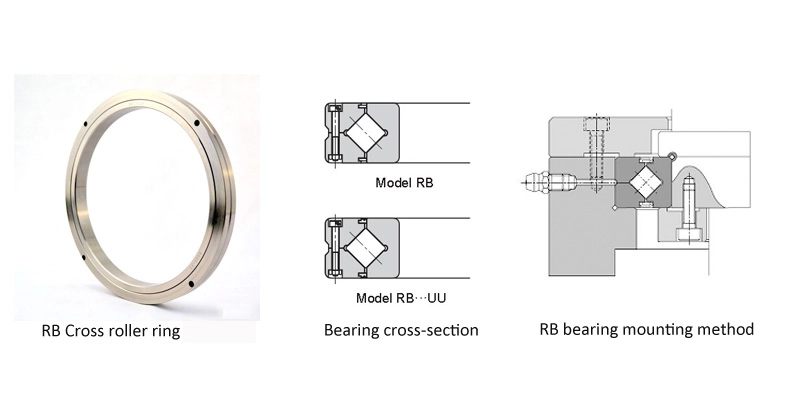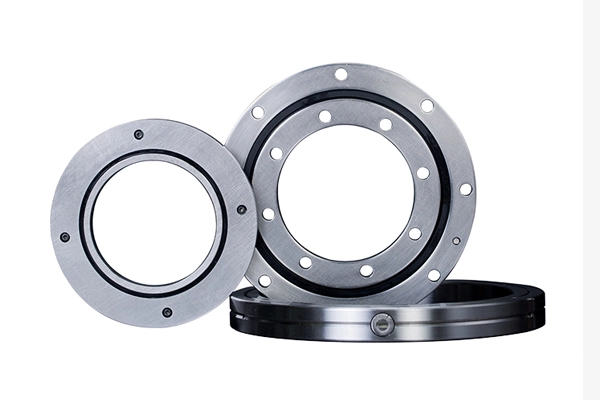What Materials Are Used to Make High Rigidity Crossed Roller Bearings?
High Rigidity Crossed Roller Bearings represent a pinnacle of precision engineering, serving as critical components in numerous advanced mechanical systems. These sophisticated mechanical devices are designed to handle complex load requirements with exceptional stability and minimal deflection. Understanding the materials that compose these bearings is crucial for engineers, manufacturers, and industries relying on high-performance mechanical solutions.

Can the Choice of Materials Really Impact the Performance of Crossed Roller Bearings?
The selection of materials in High Rigidity Crossed Roller Bearings is a nuanced process that directly influences their mechanical performance, durability, and reliability. Unlike traditional bearing designs, crossed roller bearings demand exceptional material properties to withstand extreme operational conditions while maintaining precise dimensional tolerances.

Modern manufacturing of High Rigidity Crossed Roller Bearings predominantly utilizes high-grade alloy steels and specialized ceramic materials. The primary materials include chrome steel (SUJ2), stainless steel, and advanced ceramic compounds like silicon nitride and tungsten carbide. Each material brings unique characteristics that enhance the bearing's structural integrity and performance capabilities.
Chrome steel (SUJ2), a high-carbon chromium alloy, remains the most common material due to its exceptional hardness, wear resistance, and cost-effectiveness. This material undergoes rigorous heat treatment processes to achieve optimal microstructural properties. The heat treatment typically involves quenching and tempering, which significantly increases the steel's surface hardness and fatigue resistance.
Stainless steel variants, particularly martensitic and precipitation-hardening grades, offer superior corrosion resistance and maintain excellent mechanical properties under challenging environmental conditions. These materials are particularly valuable in aerospace, medical, and marine applications where traditional chrome steel might experience accelerated degradation.
Ceramic materials represent the cutting-edge of bearing material technology. Silicon nitride (Si3N4), a superior ceramic compound, provides remarkable advantages over traditional metallic materials. Its extremely low thermal expansion coefficient, exceptional hardness, and remarkable chemical stability make it ideal for high-precision and high-speed applications. Tungsten carbide, another advanced ceramic material, offers unparalleled wear resistance and can withstand extreme operational temperatures.

The material selection process involves comprehensive analysis of anticipated operational parameters, including load magnitude, rotational speeds, temperature ranges, and environmental conditions. Engineers must carefully balance material performance characteristics with cost considerations, ensuring optimal design solutions that meet specific application requirements.
How Do Manufacturing Processes Influence Material Performance in Crossed Roller Bearings?
Manufacturing processes play a pivotal role in transforming raw materials into high-performance High Rigidity Crossed Roller Bearings. Advanced metallurgical and ceramic processing techniques have revolutionized the production of these critical mechanical components, enabling unprecedented levels of precision and reliability.
The initial material preparation stage involves sophisticated refining processes that eliminate microscopic impurities and ensure uniform material composition. For metallic materials like chrome steel and stainless steel, vacuum degassing and electro-slag remelting techniques are employed to achieve exceptional material purity. These processes significantly reduce non-metallic inclusions that could potentially compromise the bearing's structural integrity.
Heat treatment represents another crucial manufacturing phase that fundamentally transforms material properties. For chrome steel and stainless steel bearings, controlled heating and rapid cooling processes create martensitic microstructures characterized by extreme hardness and enhanced wear resistance. Precise temperature control within narrow ranges ensures consistent material transformation and minimizes potential dimensional variations.

Ceramic material processing involves equally complex manufacturing techniques. Silicon nitride and tungsten carbide components undergo high-pressure sintering processes that consolidate ceramic powders into dense, homogeneous structures. Advanced hot isostatic pressing (HIP) techniques apply simultaneous high temperature and uniform pressure, eliminating potential porosity and enhancing material density.
Precision grinding and superfinishing processes follow material preparation and heat treatment stages. These techniques achieve surface roughness measurements in nanometer ranges, ensuring minimal friction and maximizing bearing performance. Computer numerical control (CNC) grinding machines equipped with diamond-coated abrasive wheels enable unprecedented geometric accuracy and surface finish quality.
Surface treatment technologies further enhance material performance. Advanced coating techniques like physical vapor deposition (PVD) and chemical vapor deposition (CVD) apply ultra-thin, wear-resistant layers that significantly extend bearing operational life. These nanoscale coatings can modify surface tribological properties, reducing friction and mitigating potential wear mechanisms.
Quality control measures involve comprehensive non-destructive testing methodologies. Advanced techniques like eddy current testing, ultrasonic scanning, and magnetic particle inspection ensure material integrity and detect potential microscopic defects. These rigorous evaluation processes guarantee that each bearing meets stringent performance specifications.
What Emerging Technologies Are Transforming Material Selection in Crossed Roller Bearings?
Emerging technologies are dramatically reshaping material selection strategies for High Rigidity Crossed Roller Bearings. Computational materials science, artificial intelligence, and nanotechnology are converging to develop unprecedented material solutions that challenge traditional design paradigms.
Machine learning algorithms now enable more sophisticated material property predictions, allowing engineers to simulate complex material behaviors before physical prototyping. These computational approaches analyze thousands of potential material configurations, identifying optimal compositions that maximize performance while minimizing manufacturing complexities.
Nanomaterial research introduces revolutionary concepts like self-lubricating ceramic composites and hybrid metallic-ceramic structures. Graphene-enhanced ceramic matrices and nano-structured metallic alloys promise significant improvements in wear resistance, thermal stability, and mechanical strength. These cutting-edge material innovations could potentially revolutionize crossed roller bearing design principles.
Additive manufacturing technologies, particularly selective laser melting and electron beam melting, enable complex geometries and material compositions previously impossible through conventional manufacturing methods. These techniques allow for intricate internal structures that optimize material distribution and enhance overall mechanical performance.
Biomimetic material design draws inspiration from natural structures, incorporating principles observed in biological systems to develop more resilient and efficient bearing materials. Hierarchical material architectures mimicking natural bone structures offer unprecedented strength-to-weight ratios and energy absorption capabilities.

Luoyang Huigong Bearing Technology Co., Ltd. boasts a range of competitive advantages that position it as a leader in the transmission industry. Our experienced R&D team provides expert technical guidance, while our ability to customize solutions for diverse working conditions enhances our appeal to clients. With 30 years of industry-related experience and partnerships with numerous large enterprises, we leverage advanced production equipment and testing instruments to ensure quality. Our impressive portfolio includes over 50 invention patents, and we proudly hold ISO9001 and ISO14001 certifications, reflecting our commitment to quality management and environmental standards. Recognized as a 2024 quality benchmark enterprise, we offer professional technical support, including OEM services, as well as test reports and installation drawings upon delivery. Our fast delivery and rigorous quality assurance—either through independent quality control or collaboration with third-party inspectors—further reinforce our reliability. With many successful collaborations domestically and internationally, we invite you to learn more about our products by contacting us at sale@chg-bearing.com or calling our hotline at +86-0379-65793878.
References
1. Hamrock, B. J. (2005). Fundamentals of Machine Elements. McGraw-Hill Education.
2. Dowson, D. (2008). History of Tribology. Professional Engineering Publishing.
3. ASM Handbook, Volume 4: Heat Treating. ASM International.
4. Bhushan, B. (2013). Springer Handbook of Nanotechnology. Springer.
5. Stephens, R. I. (2000). Metal Fatigue in Engineering. Wiley-Interscience.
6. Booker, J. D. (2005). Design and Manufacture of Machine Elements. Wiley.
7. Stachowiak, G. W. (2005). Engineering Tribology. Butterworth-Heinemann.
8. Matthews, F. L. (2000). Composite Materials: Engineering and Science. Woodhead Publishing.
9. Kutz, M. (2006). Mechanical Engineers' Handbook. Wiley.
10. Hertzberg, R. W. (1996). Deformation and Fracture Mechanics of Engineering Materials. Wiley.

